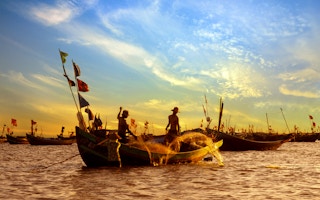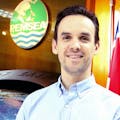According to the World Wide Fund for Nature (WWF), coastal and oceanic environments are valued conservatively at US$2.5 trillion and the United Nations Environment Programme (UNEP) estimates that over 60 percent of the world’s total gross national product comes from areas within 100 km of the coastline. Coastal and marine areas provide a rich array of services that directly and indirectly contribute to human survival and quality of life, supporting local coastal communities and their larger national economies, including food, energy, trade, recreation, shoreline defense, processing of nutrients, pharmaceuticals, carbon sequestration and much more.
To continue reading, subscribe to Eco‑Business.
There's something for everyone. We offer a range of subscription plans.
- Access our stories and receive our Insights Weekly newsletter with the free EB Member plan.
- Unlock unlimited access to our content and archive with EB Circle.
- Publish your content with EB Premium.
The seas’ vital importance in East Asia
Covering 7 million square kilometres (km) and 235,000 km of coastline, the seas of East Asia are some of the most ecologically and economically important sea areas in the world. The region is home to over one third of all coral reefs and mangroves and has the highest levels of biodiversity for coral reef fish, mollusks, mangroves and seagrass species. The marine economy comprises 15-20 percent of the gross domestic product (GDP) in some East Asian countries, such as Indonesia and Vietnam.
But with a growing population, mounting pressure on the existing resource base and increasing access to coastal and marine environments through technological advances, accelerated development and exploitation of coasts and oceans is a certainty.
The environmental impacts of economic development are causing a decline in ecosystem services and degradation of the natural capital that is the basis for economic activity. For instance, mangrove forests have been reduced to 30-50 percent of their historical coverage and 88 percent of coral reefs in Southeast Asia are under threat. According to the United Nations Development Programme (UNDP), impacts from overfishing, marine pollution, invasive aquatic species, coastal habitat loss and ocean acidification cost the global economy an estimated US$350 billion – US$940 billion every year.
In a region so dependent on its seas, can economic growth in coastal and marine areas be sustainable?
The emergence of a blue economy
Blue economy has emerged as one potential driver of sustainable economic growth in East Asia. The concept first gained prominence in the marine context around the Rio+20 Conference in 2012. Organizations including UNDP and Asia-Pacific Economic Cooperation (APEC), along with several governments in East Asia, have made efforts to define and promote the concept. Based on our research and experience, we suggest that blue economy is the set of environmentally and socially sustainable commercial activities, products, services and investments dependent on and impacting coastal and marine resources. Four key elements are present in coastal and marine economic activity that we consider blue economy:
- Protects, restores and sustains healthy coastal and marine ecosystem services;
- Generates sustainable, equitable economic benefit and inclusive growth;
- Integrates approaches between multiple industries and government; and
- Innovates, informed by the best available science.
While the concept of blue economy has remained largely the domain of government, the private sector is showing increasing interest in its potential, as evidenced by recent initiatives from The Economist and others. Coastal and marine areas in East Asia support a wide variety of established and emerging industries, including:
Fisheries and aquaculture: East Asia is home to 8 of the top 15 marine capture fish producing countries in the world and by 2030, Asia could consume 70 percent of fish globally.
Ports, shipping and marine transport: The region hosts9of the 10 busiest container ports and 4 of the top 6 shipping economies in the world.
Tourism, resorts and coastal development: 80 percent of all tourism takes place in coastal areas and international tourism in the Asia-Pacific region has shown stronger growth than other parts of the world.
Oil and gas: Asia’s primary energy demand could rise by 40 percent by the end of the decade and offshore fields could account for 34 percent of worldwide crude oil production by 2025.
Coastal manufacturing and heavy industry: In 2013, Asia accounted for over 45 percent of all global manufacturing output and East Asia is home to the largest shipbuilding economies in the world.
Renewable energy: Waves, tides, currents, thermal gradients, wind and biomass hold the potential to meet all current global energy needs, with China, Japan, RO Korea and other governments in the region pushing for development of renewable marine energy.
Companies in these industries and others are exposed to a number of operational, regulatory, reputational, market and financial risks related to proper management of marine ecosystem services that a blue economy approach can help to address. Across coastal and marine industries, examples of potential risks include:
- Increased operating costs from decline in fish stock productivity;
- Loss of tourism revenue from degradation of natural landscapes that attract tourists;
- Disruption to business operations from environmental incidents in oil and gas operations; and
- Vulnerability of coastal manufacturing infrastructure to sea level rise, storm surges, etc.
For companies that effectively manage the disruptive potential of blue economy, it can also generate new opportunities. Examples include:
- Access to expanded and premium markets through enhanced brand for seafood companies;
- Social license to operate from good relationship with governments and communities;
- Innovation in marine technology based on emerging sustainability trends; and
- Access to new and lower cost sources of capital.
As the natural capital that industry depends on erodes, so too will the health of these industries. The way to ensure the long-term sustainability of both ecosystems and the economy is by transitioning the traditional coastal and marine economy to a blue economy, one that builds the long-term ecological, social and economic health of coastal and marine ecosystems and communities.
Blue economy for business
Partnerships in Environmental Management for the Seas of East Asia (PEMSEA) will be launching a full report on Blue Economy for Business in East Asia this November at the East Asian Seas Congress 2015, the largest regional event focused on environmental management of coasts and oceans. Join leaders from business, government, international organizations and research institutions to explore blue economy risks and opportunities along with actions for cross-industry and government collaboration on blue economy development. Speakers include The Economist, Vietnam Business Council for Sustainable Development, World Ocean Council and executives from the oil & gas, fisheries, tourism, manufacturing, and environmental services sectors and more, all coming together to explore and develop the potential for building a blue economy in East Asia.
Ryan Whisnant is head of professional services, Partnerships in Environmental Management for the Seas of East Asia (PEMSEA). This post was written exclusively for Eco-Business.









